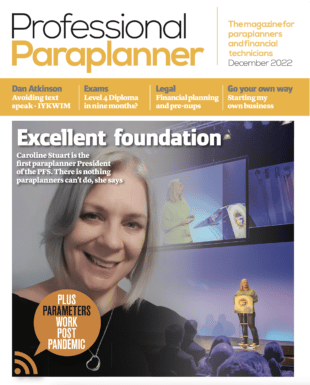It is common for the trustees of a trust to be family members but this can cause issues can arise when those members are also beneficiaries of the trust. Kim Jarvis, protection technical specialist, Royal London, considers the issues and a potential solution.
Trusts are a very important planning tool that allow clients to appoint people, ‘trustees’, to manage a gift for others. Trustees are responsible for looking after the asset on behalf of the person, or persons, that will ultimately receive it – the beneficiaries.
As the name suggests clients need to trust the people that they appoint as trustees to carry out their duties with confidence, and this is why it’s not uncommon for a client to appoint family member(s).
Trustee duties
However, being a trustee comes with duties and responsibilities. When anyone is taking on the role of a trustee, they should familiarise themselves with the trust deed, making sure that they understand the powers and duties that have been given to them.
Under a discretionary trust, trustees have a duty to decide who will benefit from the trust fund, by how much and when. Whilst a client can offer guidance on who they would like the beneficiaries to be, the decision on who should benefit rests solely with the trustees.
When carrying out this duty, trustees must act openly and honestly to make sure that all the beneficiaries’ interests are taken into account.
What happens if the client wants the trustees to be the ultimate beneficiaries?
Let’s work through an example. Take Khalid, who takes out a life insurance plan which pays out on death, and he places it under a discretionary trust. He appoints his two children as the trustees and prepares a letter of wishes stating that the children are also the beneficiaries.
On Khalid’s death, the death benefit is paid to the two children. As trustees, his children need to carry out their role as trustees, acting impartially and treating all beneficiaries equally and fairly. This means that when using discretion to distribute the trust fund, trustees need to act in the best interest of all beneficiaries and not take preference over one beneficiary at the expense of another.
But the trustees using their power of discretion to pay to themselves creates a conflict of interest, as the children are benefiting personally from their role as trustee. Whilst all situations are different, having this conflict of interest could create tension and could lead to legal disputes. For example, if Khalid had four children would the two children, who don’t benefit, challenge their siblings?
If Khalid clearly explains his wishes and the reason behind those wishes, for example, his two younger children are to benefit from other assets within his estate, it is less likely to create tension. However, where a beneficiary doesn’t believe that a trustee has fulfilled their duties correctly, they can sue.
How to avoid disagreements
One solution to avoid potential conflicts of interest is to appoint a neutral trustee. Having trustees that are not beneficiaries under the trust can help make the process of deciding who will ultimately benefit more open and less likely to be criticised by other potential beneficiaries.
In Khalid’s situation where only two of his children are the ultimate beneficiaries, he may want to appoint a third trustee, for example, a brother or sister, family friend or even a professional trustee.
However, sometimes clients don’t want to appoint anyone outside their immediate family or struggle to find a neutral trustee. By speaking to the potential beneficiaries and explaining their wishes the risk could be minimalised. Whilst an aggrieved beneficiary could still sue a trustee, the beneficiaries knowing and understanding a client’s wishes could balance the conflict of interest.
Another alternative is where it appears that potential beneficiaries may feel that the trustees are not acting in the best interests of all beneficiaries by distributing the trust fund to themselves, those trustees can retire in favour of a neutral trustee to maintain transparency.
All family situations are different but in circumstances where a client wants the trustees and beneficiaries to be one and the same, as an adviser you need to explain the different roles.
Having regular communication, not just with your client but the trustees and beneficiaries, can ensure that any hurdles are deal with promptly. Keeping a record of these conversations will help beneficiaries and trustees understand, not just their roles, but the thoughts and wishes of your client. This, in turn, can help elevate tension and ultimately ensure that the right people receive their assets more quickly.
Main image: joshua-hoehne-rIUx_Q9_axw-unsplash






























